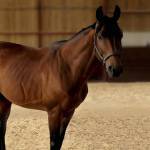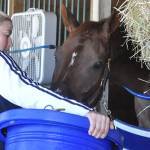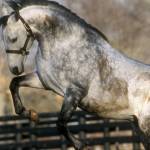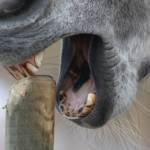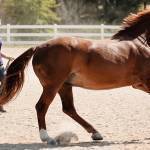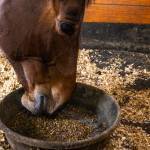Take Measures to Limit Mud and Dust on Horse Farms
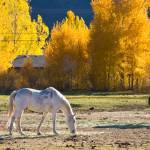
Horses are hard on the ground surface, and fields where horses are turned out will almost always have some muddy areas during rainy seasons. In dry weather, these muddy patches will become bare, dusty spots. Good planning and management can alleviate some—but probably not all—problems with mud and dust. The same measures will help to control both conditions.
1. Getting and keeping good ground cover will prevent some mud and dust. Choose forage strains that will withstand heavy traffic, allow newly seeded pastures to become well establish before allowing horses to graze, and keep horses out of fields when the ground is extremely wet. Avoid overgrazing in every season. This can be accomplished by rotating fields to allow heavily grazed areas to rest and regrow.
2. Discourage overuse of some areas of ground. Scatter hay piles around the field, preferably not near gates or fences.
3. Provide multiple shade areas rather than a single location. Don’t put feeders, hay piles, or water tanks near gate areas.
4. When possible, pick up manure and leftover hay from high-use areas. Anything that holds moisture will keep the soil from drying.
5. For areas of heavy use such as near gates and water sources, protect the ground surface by installing geotextile fabrics or slightly raised pads of compacted gravel. Fence horses away from ponds and streams to avoid degrading the banks. Pump or pipe water from these sources to watering tanks in fields and paddocks.
6. Use drains, gutters, and shallow ditches to redirect surface water rather than letting it run into fields. Channeling storm runoff into vegetated areas prevents washing out of topsoil.

